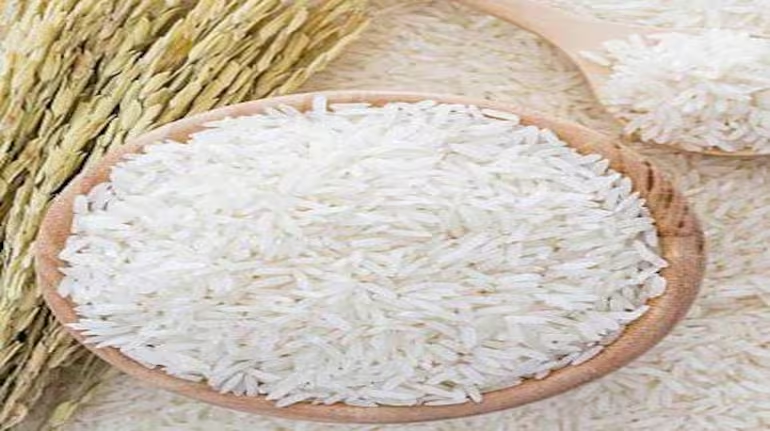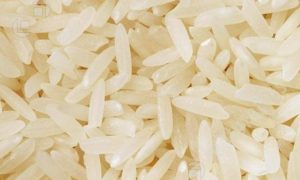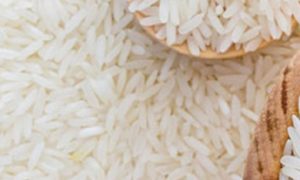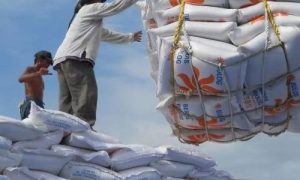Kalanamak rice bowl sees grain concern sprout in poll season

Farmers in Siddharthnagar, UP, express concern over unsold Kalanamak rice, awaiting a separate MSP. Production surged from 4,311 MT in 2019 to 15,000 MT in 2021. International demand rose from 2% to 7% between 2019-2022. Despite government schemes and exports to Singapore and Nepal, farmers face market challenges. With elections approaching, they seek political attention but express skepticism about manifesto promises.
In the fertile poll territory of eastern Uttar Pradesh, farmers in Siddharthnagar cling on to the grain of hope that the “Buddha’s gift” — Kalanamak rice – will give them a secure future via a separate minimum support price (MSP) for it.
This electoral wish of the cultivators is now among their top concerns in Domariyaganj Lok Sabha constituency, under which Siddharthnagar falls.
The wish is not without a reason. The farmers say much of the Kalanamak rice they harvested last year is awaiting customers due to the “marketing channel” provided earlier not being available to the same extent now and the focus shifting to the promotion of fisheries.
Kalanamak rice is Siddharthnagar district’s signature item under the Uttar Pradesh government’s One District One Product (ODOP) scheme. It has enjoyed this status since 2018. Kalanamak rice earned the Geographical Indication (GI) tag in 2012.
When Kalanamak rice got the ODOP status in 2018, the area under cultivation in the district was 2,200 hectare (one hectare equals 10,000 sq mt). It reached 12,000-hectare within one sowing season.
Balram Chaudhary, 47, an otherwise prosperous farmer at Ramwapur Nanka village, is one of those worried about his unsold stock of Kalanamak rice worth over ₹2 lakh wrapped in plastic at home.
“I got the best produce from 50-bigha land in December 2023. As luck would have it, over half of my harvested Kalanamak stock is pending for sale,” Chaudhary says.
For the coming sowing season in June, he plans not to sow Kalamanak rice on more than five bigha. One bigha is 27,000 sq feet.
His worry is a common refrain in Shohratgarh tehsil of Siddharthnagar: where to sell the pending stock of Kalanamak rice that they harvested last year?
Chaudhary’s village is one among 341 with a population of 2000.
Tilak Ram Pandey, 79, another farmer, says, “I have four quintal (400 kg) left. Some we will eat, but what about the remaining stock?”
He says his ancestors began harvesting Kalanamak and continued the practice but the lack of a marketplace is a dampener.
With a black husk and strong fragrance, Kalanamak rice, a premium non-Basmati variety, grows in 10 districts of the state’s Terai region. Kalanamak is considered a gift to the people from Lord Buddha when he visited the region.
Farmers in at least 150 villages of Shohratgarh grow Kalanamak rice but the land under cultivation may reduce due to lack of a marketplace, the growers say.
“Between 2018 and 2020, our produce got sold instantly. The swift sale is absent now. We put in more of an effort as Kalanamak takes 40 more days than other rice varieties to reach the harvesting stage. In return, we don’t find a market for it. On the other hand, other varieties such as Sambha rice are sold instantly,” says Indramani Chaudhary, 66, a farmer at Ramapur Nankar, another village in Siddharthnagar.
Production of 4,311 MT was recorded in 2019 and it increased to 15,000 MT in 2021, according to official figures.
The international demand, according to the UP government, had increased from 2% in 2019-20 to nearly 7% in 2021-22.
The Uttar Pradesh government encourages farmers, entrepreneur/exporters under ODOP scheme through a financial assistance scheme, training and tool kit scheme and procurement assistance scheme. Currently, Kalanamak rice is exported to Singapore and Nepal.
In addition, it is available on the e-market place and ODOP e-market.
However, a separate MSP is awaited.
“The sale of Kalanamak rice is in a scattered manner. There is no proper separate channel. Grading like Basmati is awaited from the Government of india. When grading will be done, its rates will be different, owing to its properties,” says AK Vishwakarma, deputy director agriculture for Siddharthnagar.
“It’s a fine rice and its rate should be higher. Proposal for a separate MSP has been made by MP and MLAs and the office of the chief minister. Hopefully, Kalanamak rice will get a separate MSP soon and then farmers will get the increased sale price,” Vishwakarma says.
Sharing details of expenditure, farmers says a grower invests about ₹1000 for tillage before sowing per bigha, ₹1200 for plantation, ₹600 per bigha for fertilizer, ₹600 per bigha for the use of combine machine that cuts and threshes grains, and ₹1000 per bigha for urea and minor expenses. All this is apart from the labour that the farmers and their family members put in.
“After this, the Kalanamak rice is sold @ ₹10,000 while the Sambha rice is sold at @ ₹3,200 per quintal or 100-kg. The difference is in the yield and market. One bigha yields a maximum 1.5 quintal of Kalanamak rice and over four quintal Sambha rice. While Sambha rice is sold even before it is finally harvested, for Kalanamak rice, we wait for some shopkeeper or locals to buy,” says Devendra Chaudhary, 31, another farmer.
Siddharthnagar is part of the Domariyaganj Lok Sabha seat that goes to polls in the sixth phase on May 25.
Major rallies in the district and at places along Indo-Nepal order are being planned but Kalanamak farmers don’t know if their concerns are in any manifesto.
“No politician has come to us till now and I do not think they are concerned about Siddharthnagar’s ODOP. Yes, we will vote but have little hope from politics or politicians,” says Devendra Chaudhary.
“We have minimum support price (MSP) for sugarcane, foodgrain then why not Kalanamak also? Let there be a minimum support price at which we can sell it. Since farmers cannot take the rice out of the district to sell it as they do not have GST, we are simply dependent upon government or traders’ support,” says Balram.
According to the data shared by Union government in Rajya Sabha in December 2021, Kalanamak production was 4,311.00 metric tonnes in 2019 and in 2020 it was 6,849.00 MT. In 2021, the figure was 15,000 MT. In 2019-20, the export proportion was 2% which increased to 4% in 2020-21 and 7% in 2021-22.














